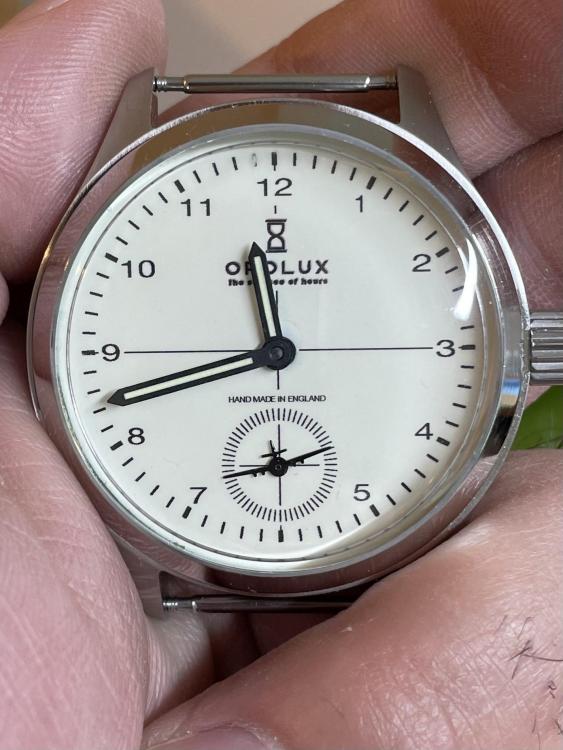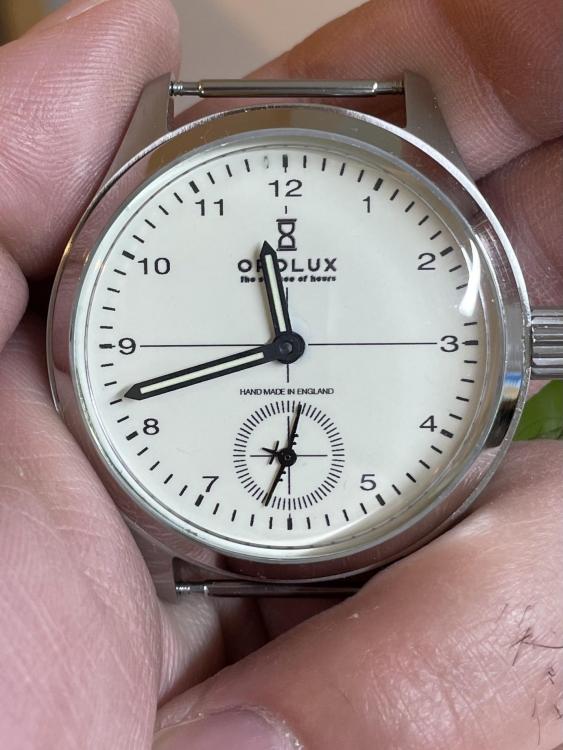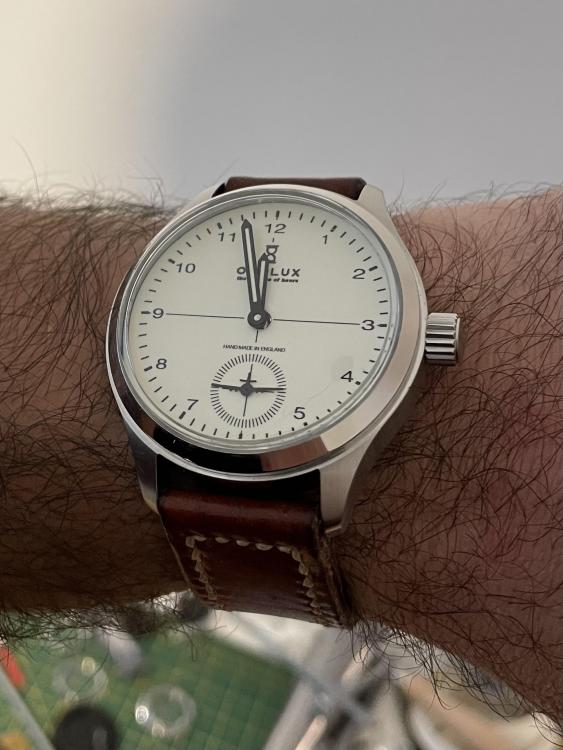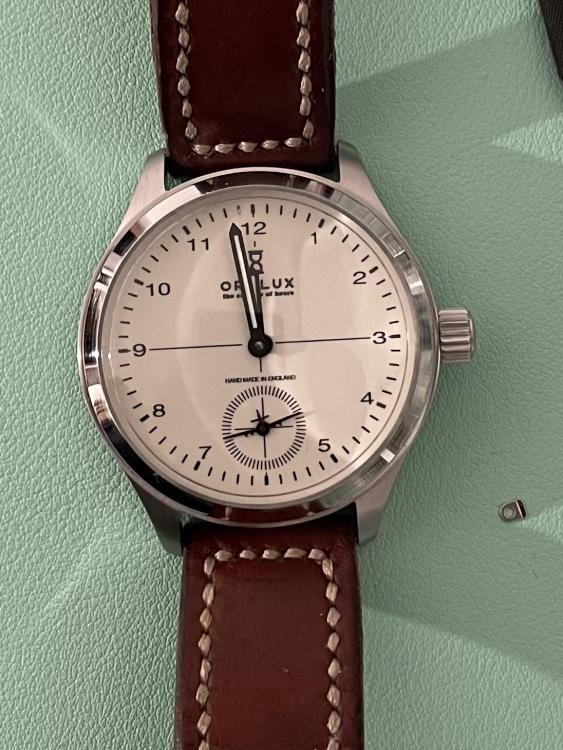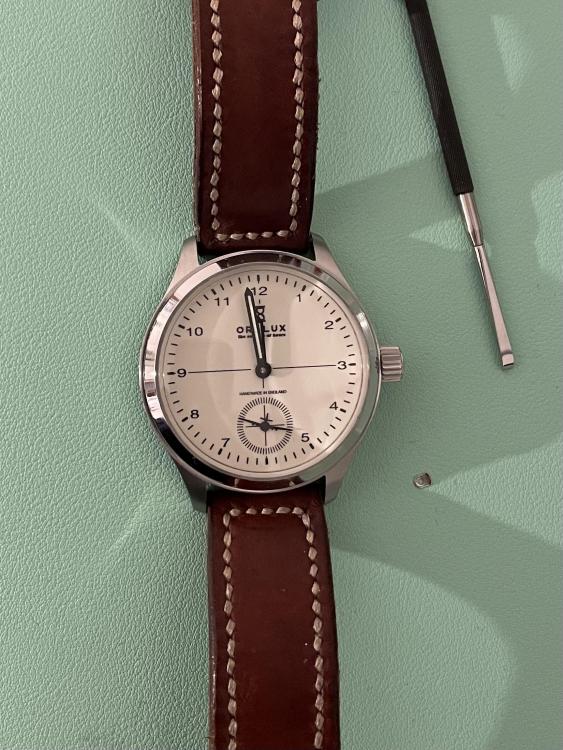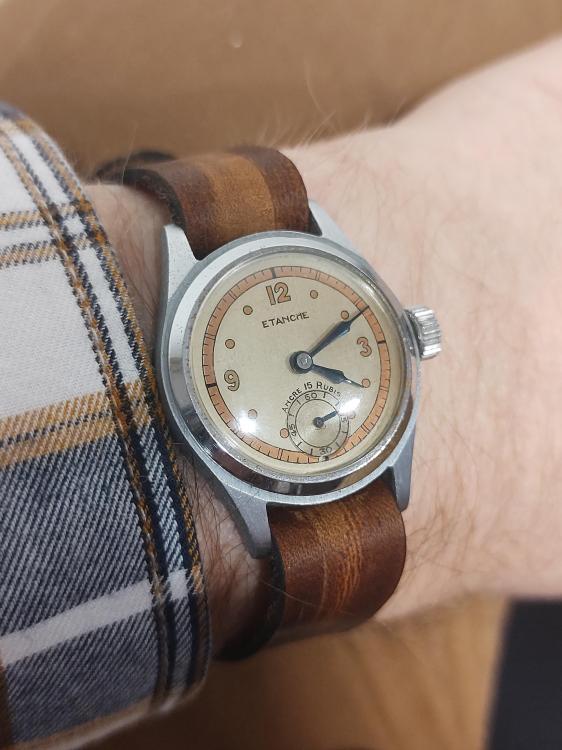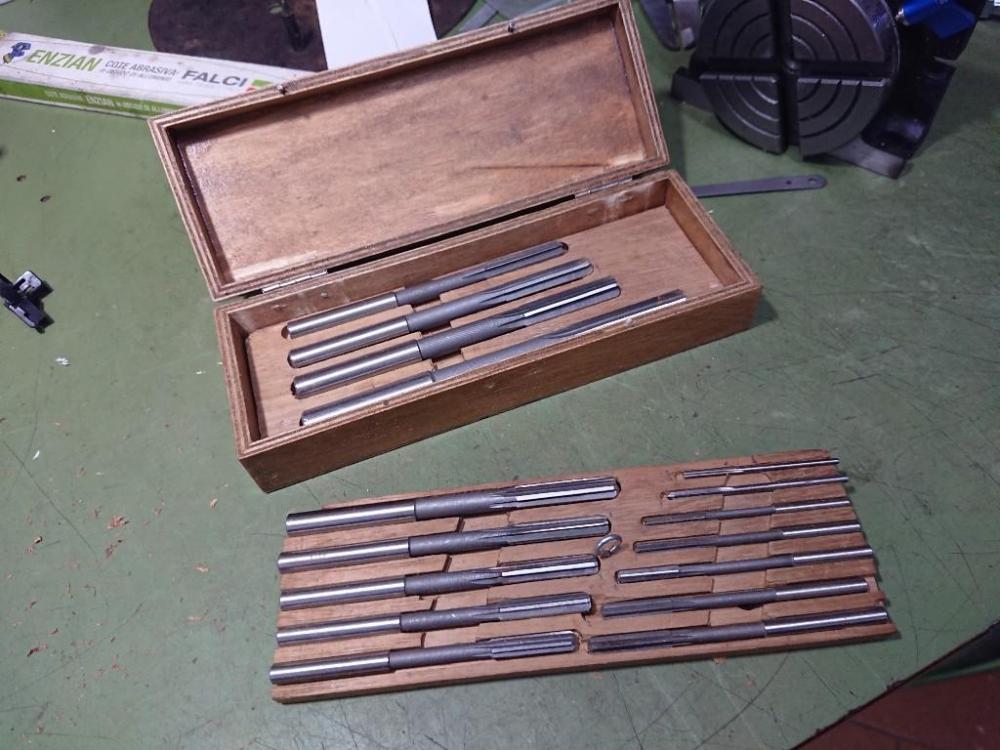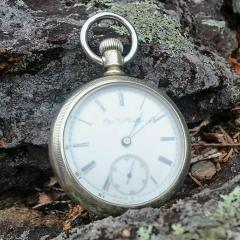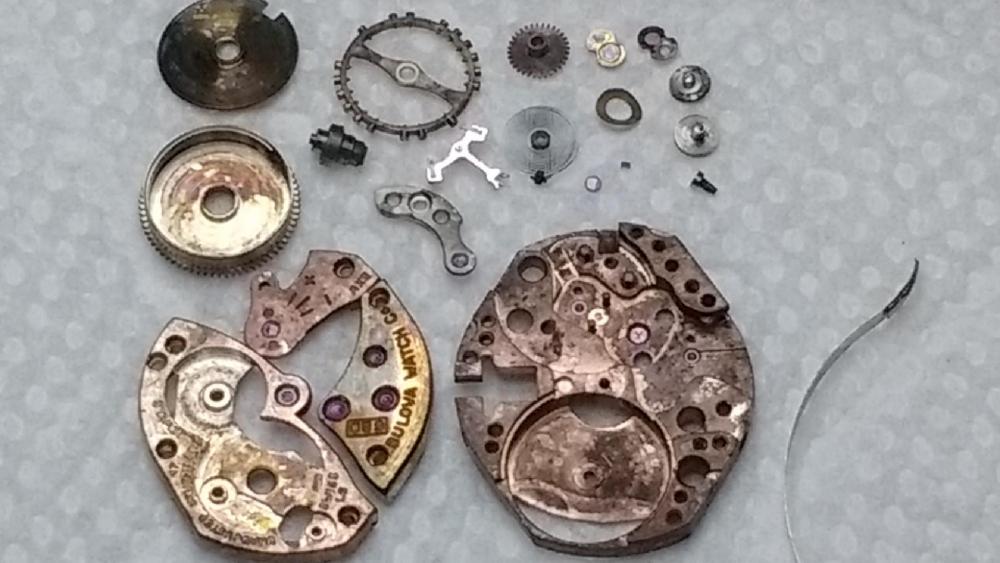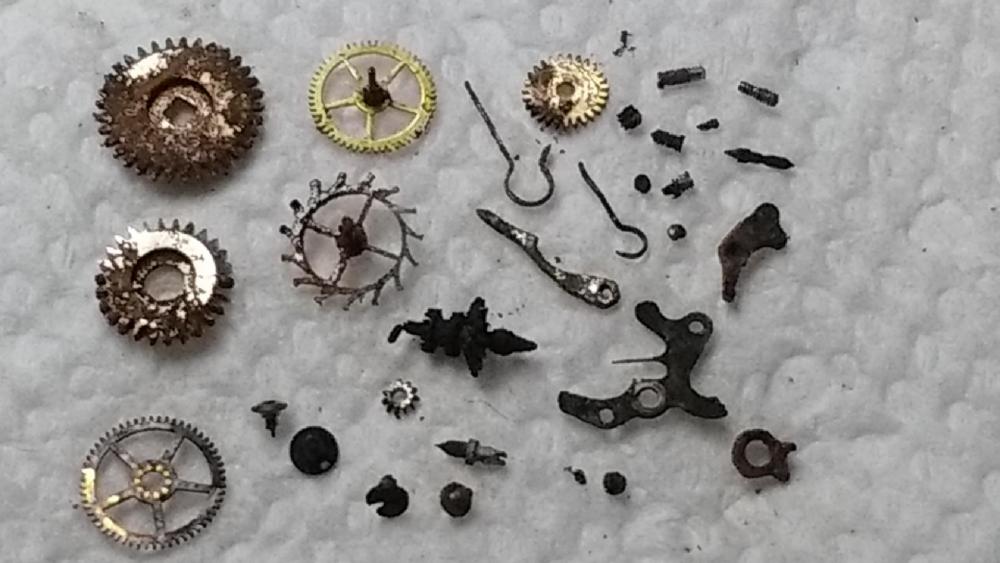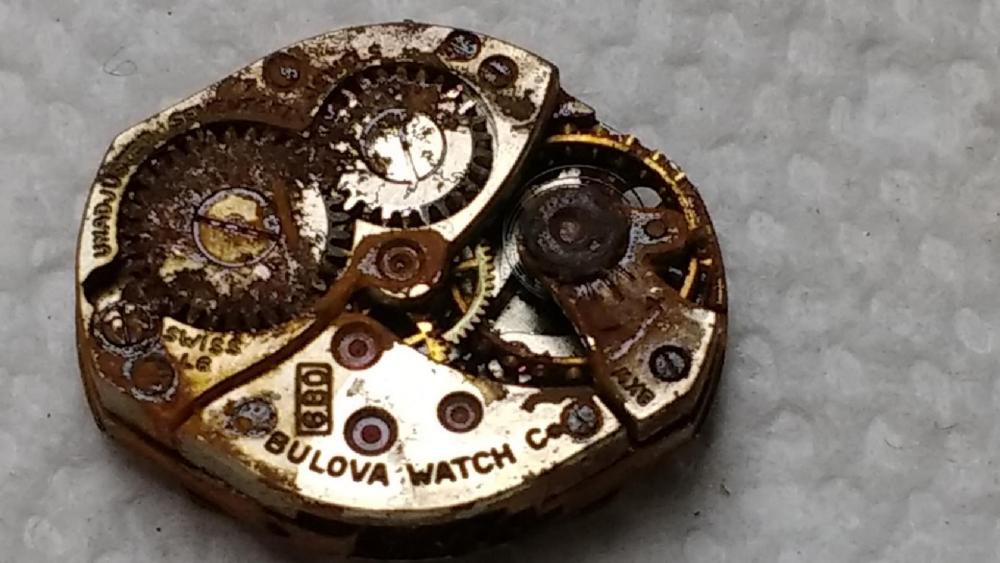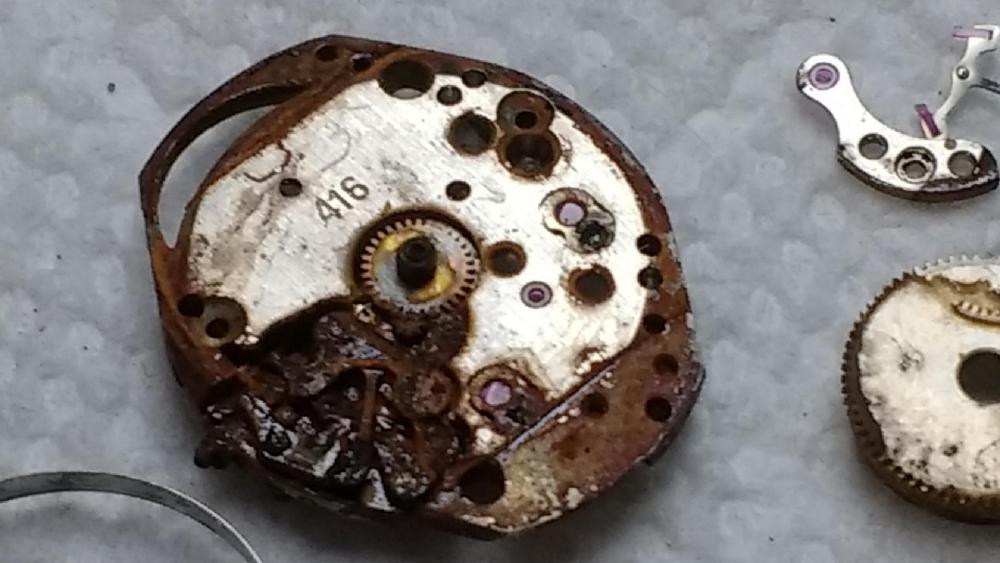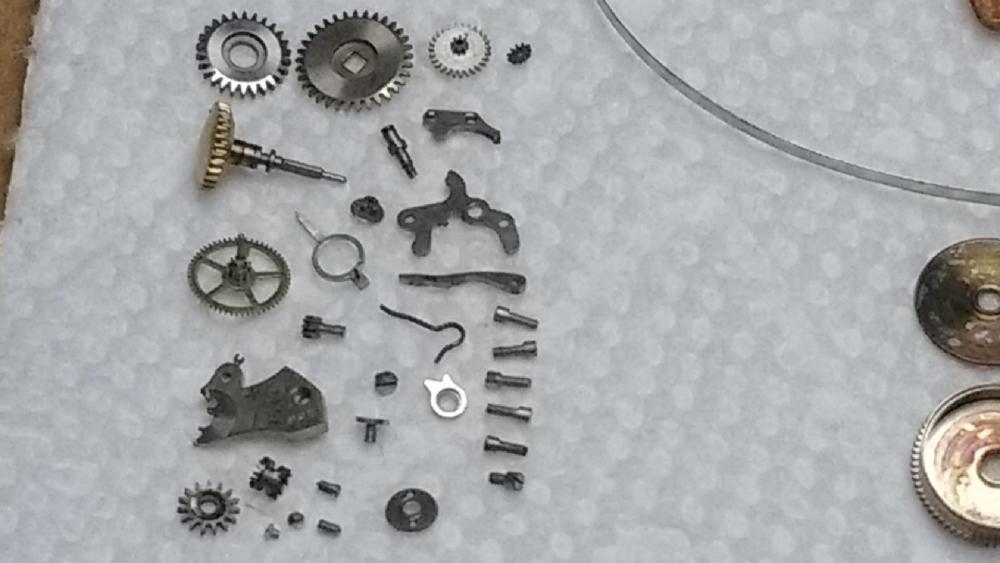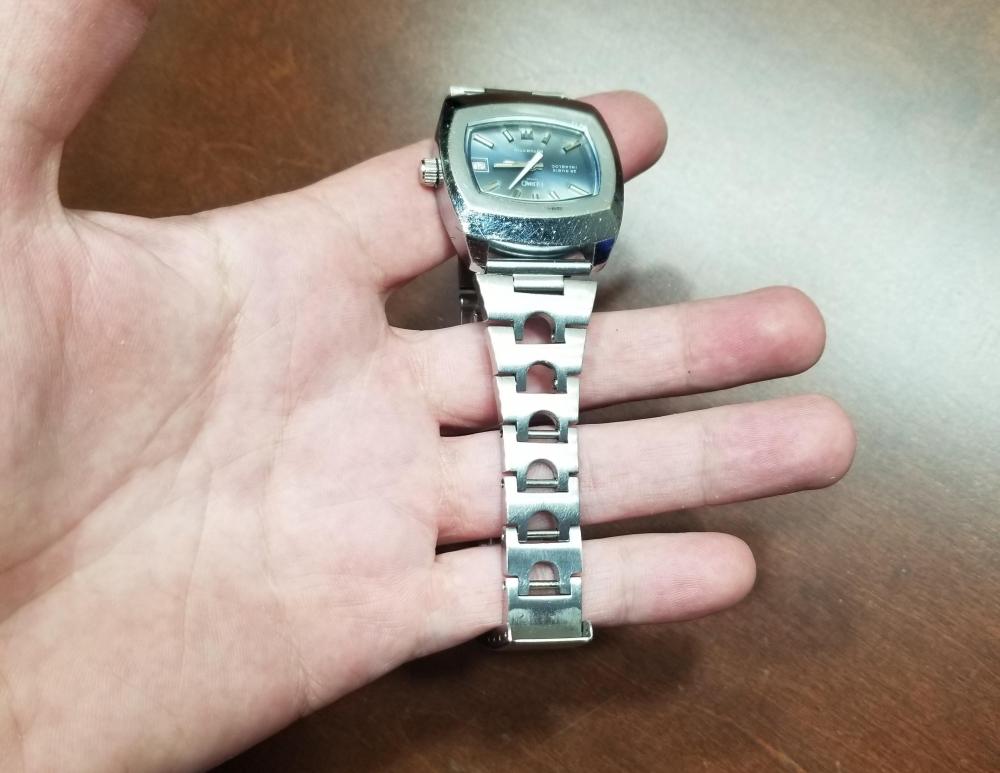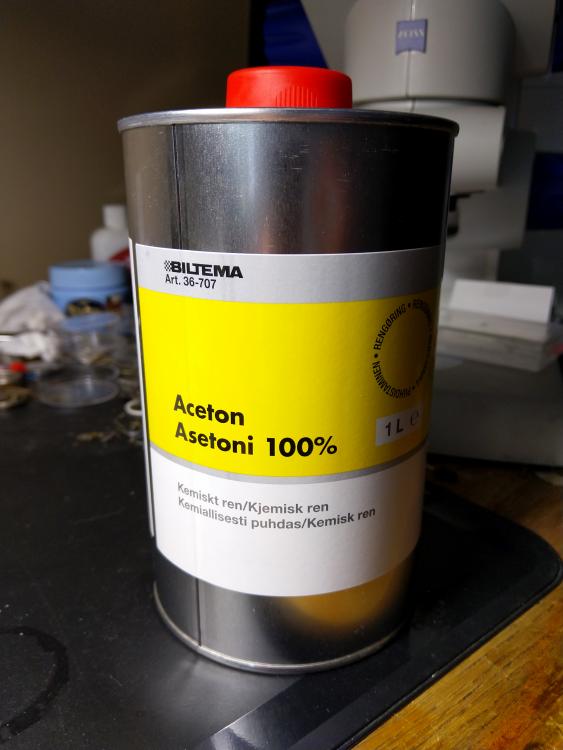Leaderboard
Popular Content
Showing content with the highest reputation on 11/17/21 in all areas
-
Once the clock is dismantled and the spring removed in its wound state I then mount it on a home made winder and release the tension on the spring for cleaning and oiling once done it is re wound and bound with a wire ready for re fitting when assembling the clock. Attempting to clean a wound spring is hopeless. The winder I knocked up in afternoon to remove an refit a small clock mainspring and has been usefull ever since. Its quite simple and should anyone want to see it I will post a picture if required.3 points
-
3 points
-
Right here is the Cont Mk 1. Hight is 10 Cm width is 7Cm made from 2.5 mm scrap tube, The brass disc is a clock barrel top to stop the spring wandering during the wind, it is adjustable on the shaft for different width springs. The loop end anchor screw moves up and down allowing the spring to close up during winding. The disc can be removed if not needed the arbour is a silver steel rod with a pin drilled into the business end to hold the spring eye . The silver piece attached to the pillar is to arrest the handle so you can manually handle the spring with two hands safely. It pivots in the middle and is stopped by a couple of screws when moved to position (yet to be fitted). Its been cleaned up a bit but the bare bones were done in an afternoon. The cost was nothing built from bits. Suitable for smaller clocks/alarm clocks etc, do not use on powerful clock springs. I am working on a home build for that to superceed the contraption Mk11, feel free to copy it, modify it, reject it, insult it, or laugh at it, but it works.2 points
-
2 points
-
Hi As an alternative method to that advocated by OH, wind the spring up and bind it with a wire making sure its well held then proceed as per old Hippy's suggestion this way there is less likelyhood of anything slipping and breaking a pivot.2 points
-
Hi JohnR725's advice "returning to basics" is sound, check each component on its own, ie Balance and then the Fork/pallet. with the balance out and power on does the fork/pallet snap crisply between the banking pins, if not investigate by removing power and then the pallet/fork and check the train by applying a turn on the spring. Do the wheels spin down with a little reverse spin at the end ? If no a train or power fault, if ok re fit the pallet/fork apply a little power and check the action if sticky , fork/pallet problem. if ok re fit the balance does it oscillate well in nt a balance/hairspring problem. by taking it down in small steps we eliminate sections of the watch.1 point
-
Out of curiosity I decided to look at some PDFs. First one is a Waltham catalog from 1911. I did snip out some images and their attached. A link to the catalog which you can download as a PDF for free. The dust bands seem to be scattered through the catalog Casually because therein each category of watch size type or whatever. https://archive.org/details/catalogueofwalth00walt Then for the Hamilton 992B would stand the reason of Waltham listed as a part that if we just had a parts list for Hamilton 992B it would be on the parts list? So I'm attaching the Hamilton 992B tech sheet and maybe call it something different? Then I can give you the search parameter but while you're at the above site you can go here and download this. It's a really good book for basic watch repair and even covers a couple of military watches both pocket wrist watch. Starting on page 84 I believe it explains how to service a Hamilton 992B. So when they finally get to removing the movement I'm not seeing the dust band? I think of it had been here I think they would've shown it or commented about or something. https://archive.org/details/TM9-1575-OrdnanceMaintenanceWristWatchesPocketWatc 992b 1946TECHBULLETIN.pdf1 point
-
If you take the pallet fork out you remove the hairspring from the balance wheel does the balance wheel turn freely all by itself? That is when back in the watch and everything down tight? Sometimes when you're really frustrated watchmaker having an issue you put the basic sin does the balance wheel turn nicely all by itself. To give it up off the air in its spins beautifully you turn it upside down does it still spin beautifully. It's a way of isolating the problem then you put the hairspring in give the balance wheel like one turn let it go does it spin beautifully at least spinning back and forth under control hairspring if not then you've isolated your problem of is that they hairspring a problem is the balance the pivots the jewels it helps isolate the problem as opposed to I have no idea which unfortunately happens a lot in watch repair.1 point
-
When it is wound up it is impossible to clean.1 point
-
It was made before 1920 probably around 1912. The hands are the spade design. It's not spelter or brass looks more like tin.1 point
-
Yes, because of the different and changing Interactions of the hairspring with the regulator. For the rest of your questions, just read @nickelsilver's post.1 point
-
With that type of ratchet you can't let it down. My advice is to remove the complete balance. Put a piece of peg wood not to thin you do not want it to break in between the escape wheel spokes so it cant run down. Undo the two nuts that are close to the pallets and remove the pallets. If you do not want to undo the nuts you can bend the part of the plate that the pallets pivot fits into then remove the pallets. Now oil all the pivots and around the mainspring winder both ends, remove the peg wood and the movement will run down. When all the power is off you can then remove the nuts and take the plates apart. Don't for get to bend the part back.1 point
-
In a watch with an overcoil hairspring, the overcoil is calculated to be isochronous. If there is an error (and all other things are as well adjusted as possible, escapement, train is free, barrel properly adjusted with a good spring etc.) then the curve can be modified to compensate the error*. In a watch with a flat spring, you can adjust the gap between the regulator pins, and that's about it. In some cases a small adjustment to the hairspring at the collet can improve things, but it's a try-and-see technique with no real method behind it. There are watches where the balance and hairspring are very well matched, proportionally, that simply perform very well. In others, in particular smaller watches, it can be very hard to get a great timing result let alone a good isochronal performance. A 30mm Omega movement from the 50s will almost always perform pretty much the same, and excellently, at full wind and after 24h, regardless of the fact that there is perhaps a 40 degree drop in amplitude. A 5x7 ligne A. Schild will probably be difficult to get a delta in 6 positions under 40 seconds at full wind, with a notable drop in performance at 24h. In addition, the quality of the hairspring has a real effect. Many commercial grade watches in the past used Nivarox 3 or 5 springs, which simply don't perform as well as Nivarox 1. Watches with steel springs are a different animal; at high amplitude there is a centrifugal effect on the balance arms which tends to slow the rate, while the hairspring is spending less time between the regulator pins, raising the rate- and the opposite at lower amplitudes, so it can have a somewhat compensating effect (but not necessarily). A springer who worked at Gruen told me they had to modify the overcoil forms when they switched from steel hairspring/split balance to modern alloy springs with solid balances. *To adjust an overcoil to raise the rate at lower amplitudes, the overcoil body is reshaped to be closer to the balance center. To reduce the rate at lower amplitudes, it's adjusted to be further from the balance center. Obviously this is tricky work, and more harm can easily be done than good. The beat will invariably be thrown out and require adjusting the collet position. In school we did these exercises on American railroad grade pocket watches, it's really watches of that quality that merit and respond well to such adjustments. James L. Hamilton's small (green) book Timing Manipulations explains the process (and many other things) very well; it's long out of print but does come up on Ebay if you keep your eyes open.1 point
-
For the answer of can you use the old mainspring yes you can but? But as the replies of indicated correctly it's no longer sort of functional? In other words you can wind the spring up the watch will run but it will not run for 24 hours and depending upon how badly the mainspring is lost its spring characteristics it may not run very well at all. As far as it's not being flat that's usually the result of people hand winding the spring in putting a severe distortion on it and then the spring gets set in a inappropriate shape. It could also be wouldn't removing it because it's now soft that could also occur. If the spring was severely distorted by inserting and you look inside the barrel the bottom and the lid should be nice and smooth and still have the plating it probably has if the spring is distorted you put pressure on those parts and you'll see wearing which is not good. The same thing would occur with putting a mainspring that is too tall is that you might utter altogether but it's too tight and you're getting no power out of it. You'll notice in the answer I gave above I gave a link if we look at the link you run down the list we get the mainsprings or in this case just one mainspring and if we click on that we get this link http://cgi.julesborel.com/cgi-bin/matcgi2?ref=qWLXEs I snipped out a picture for you depending upon where you're located one number will be more useful than the other the GR number is useful for people ordering from cousins. The number at the very top is a best fit number sometimes that shows up on eBay or particular material house here you can buy it from them providing it's still in stock to do that you have to go to the main webpage enter the number and see what happens and I will do that for you. In case you don't have at the page where you are look is here http://www.julesborel.com It looks like they haven't it's available and this is where you always get a discrepancy between the parts listing which is ancient and the homepage it's $21 but it is available. Here are usually not always but on vintage or older watches mainsprings can be more common like when you look at the link I gave first it shows all the watches that use the same spring more watches on the list the more likely the spring may still be available versus of the spring only goes in one watch then you're probably going to be screwed because nobody will ever have that. Then if you understand how the numbers work you change the number slightly to something like searching for this on eBay 711P Mainspring I see that one person has it and they'll even taken off for they want five dollars for it. By the packages in its a brand-new white spring exactly what you're looking for. Then you do have to be careful of eBay because later down the page they'll give you other results where they shorten your search term liked the word mainspring because eBay just assumes at all mainsprings will interchange. For now you could insert the old spring back in knowing that it's not perfect but it's good enough to get the watch running and testing things out it just won't have maximum performance and a run out of energy before 24 hours. But regularly for incoming watches I will do a lot of testing of things with a set spring just because it's there. Then when the watches cleaned and I see how badly set it is I always replace it so it will work with its wound up tight. Which is probably why a lot of people don't change the mainspring is because they don't realize that is going to be a problem hours later when they run out about and then the blame all kinds of other stuff and be really confused over what's going on.1 point
-
You can change the mainspring to give yourself a longer power reserve, which should deliver more constant power over a longer time. This is the easiest improvement you can make, if the existing spring is weak. If the rate is higher when the amplitude is lower (all positions?) check the hairspring is centred in the regulator pins. If it is centred, then opening up the gap between the pins (or boot and pin) very slightly will slow the rate, more so for low amplitudes.1 point
-
https://wornandwound.com/louis-erard-collaborates-with-seconde-seconde-on-a-new-error-filled-regulator/ Not quite in the spirit of the game...1 point
-
Sorry, I don't know much about the fine art adjusting except for the famous sentence: "Adjustment starts at the barrel". Which taken literally would mean that the mainspring is not part of it?!? However allow me share some considerations which are somehow preliminary to the question. Premise, I find worth to remind that in watchmaking when we say isochronism, that is is synonymous with "mainspring isochronism". That was the first problem that clock and watchmakers had to solve after a more-or-less isochronous escapement was introduced. I like to be faithful to the meaning of the Greek-derived word and call "problem of isochronism" anything that has to do with maintaining good timekeeping in different conditions. By the way, maybe not everyone knows that a similar word - plesiochronous (almost synchronous, which describes well many mechanical watches) - is used in telecommunications. We know that the due to the materials available, and the technology of the time, the first mainsprings had very variable torque output depending on the winding state. For that the fusee device was invented and became common, which counteracted that the problem with more introduced alteration of the torque. At some point, the mainspring manufacturing (and I suspect, the introduction of the Swiss lever which is more tolerant of power torque variations) allowed a big step forward. Then keyless winding was introduced, which made the operation much easier and likely to break the spring, or introduce dirt into the mov.t. People could do it at any time with one hand, even without thinking about it. At that point, smaller (pocket) watches were introduced, which people really liked, as well ladie's watches and then the wristwatch. Not having much room on these, power reserve was reduced, which minimized the difference between full winding and "any other state". All one needed to do was to wind approximatively at the same time every day, keep the watch well serviced and regulated, and good timekeeping was almost assured. Finally, the automatic winding was introduced. With that, the watch is always fully (or almost) wound. Only 8 - 10 hours of mainspring isochronous behavior are needed, not a big deal really, as a bonus with even better materials and technology accessible to the masses, one could to even skip one day of wearing the watch. In conclusion, leaving aside the obvious case of fitting a new mainspring when proven necessary, on modern and contemporary watches I think there is nothing to worry about mainspring isochronism. Because all the best practices which are beneficial to that (absolute cleanliness, meticulous inspection, and perfect lubrication of the train) are to be strictly followed anyway.1 point
-
1 point
-
1 point
-
Three more members of the club today. A "Danny Workboot", a genuine Disney(tm) Mickey Mouse, with possibly the worst nickel plating job I have ever seen, and the bizarre 24hr Esprit, which is far and away the highest quality of the three. All three scrubbed up nicely and are now sporting NOS Italian Morellato straps that are probably worth more, each than I paid for all three of the watches combined. The DW is, I believe their "St. Mawes" model and retails for a whopping £149. I paid £2.50 and still think I may have over paid slightly. On the plus side, I did imagine the DW to be much larger than it actually is. It is fairly attractive in its way, but the quality just isn't there to justify the retail price in my opinion. There is much better value on your average high street for that money.1 point
-
This 1956 Bulova has spent quite a bit of time in the above condition and fought tooth and nail during it's disassembly. Several components needed to be completely desolved to facilitate it's improvement. I tried ice machine cleaner but found it somewhat aggressive. After the first cleaning, I had intended to reuse all of these parts including the mainspring only suggested at in the lower right corner. After a second look it was determined that the balance spring would not be reusable. Several components would need to be replace, including a wheel that never got into the above picture. This was the first round of components chosen, the damaged balancecock was selected mearly for the screw it contained and then discarded. Others would need to be found. After pouring over loose wheels for several hours and test fitting for each position, I dropped in a balance wheel just for a test run. This balance is out of round and will need to be trued or I will pull the staff out for installation into the original wheel. I have not found a regulator yet but it is running. I would have liked to reuse a higher percentage of original parts but they were just to far gone. Arguably it's in better shape than when I found it. Thanks for looking. Shane 1337923888_VID_20210828_1830034.mp41 point
-
1 point
-
1 point
-
The movement is a caliber 6500. I still favour it is a reverse thread.1 point
-
No. The crown wheel screw may be be left threaded because the crown wheel, which turns counter clockwise under it, may tend to undo it. But the ratchet wheel screw does not move related to the ratchet wheel and barrel arbor airbor, no need for it being special, no matter which direction it turns. That being said, if left threaded the manufacturer gains commonality of two machining steps, and of two parts if it's identical to the crown wheel screw. To the cost of confusing most repairers as happened here, and the risk of an unpleasant breakage. At least, both of them should have three slots not one.1 point
-
1 point



